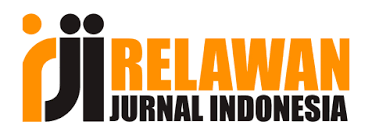Some Practical Issues Of Textology
Abstract
The scientific description of literary manuscripts is a fundamental aspect of philological and cultural heritage studies worldwide. In Uzbekistan, significant efforts have been made since independence to collect, catalogue, and introduce manuscript monuments into scientific circulation, yet a large portion of collections remains undescribed. There is limited integration of modern international standards into the systematic description processes of manuscript funds in Uzbekistan, hindering global accessibility and scholarly utilization. This article aims to analyze the theoretical foundations, historical stages, and practical issues of describing manuscript literary sources, highlighting methodological principles, paleographic indicators, and cataloging standards. The study reviews cataloging approaches, from brief and full to monographic descriptions, examines symbols and terminologies used, and documents contributions by Uzbek and foreign scholars. It identifies current gaps, including incomplete cataloging in many manuscript funds and inconsistent adherence to global standards. The article synthesizes theoretical and practical dimensions of textual description with detailed analysis of paleographic features, language indicators, and historical scripts relevant for dating and authenticating manuscripts. Improving scientific description practices by adopting international standards will enhance the preservation, accessibility, and global recognition of Uzbekistan’s manuscript heritage, transforming it into a valuable resource for world literary and historical scholarship.
References
[2] Catalogue of Manuscripts of the State Museum of Literature named after Alisher Navoi. Tashkent, 2022.
[3] R. Djumaniyazov, Classification and Preservation of Manuscripts in Central Asia. Imkon, 2011.
[4] O. Bobojonov, «Codicology in Uzbekistan: History and Perspectives», Manuscripta Orient., сс. 33–41, 2018.
[5] Collection of Eastern Manuscripts of the Academy of Sciences of the Uzbek SSR, Tashkent: Academy of Sciences of the Uzbek SSR, 1952.
[6] G. Aliyeva, «Comparative Study of Textual Variants in Classical Uzbek Literature», Textology Rev., сс. 55–62, 2021.
[7] M. Abdullaeva, «Digitalization of Manuscript Heritage: Uzbek Experience», Herit. Mod., сс. 45–52, 2020.
[8] D. DeWeese, Islamization and Native Religion in the Golden Horde. Pennsylvania State University Press, 1999.
[9] E. E. Bertels, Navoi Studies. Moscow: Nauka, 1962.
[10] V. Minorsky, Persian Historiography and Historical Sources. London: Luzac & Co., 1958.
[11] Z. Turaev, Philosophy and Poetics in Eastern Manuscripts. Tashkent Islamic University, 2008.
[12] A. Habibullayev, Source Studies and Textology. Tashkent, 2000.
[13] S. Qayumov, Studies of Manuscripts and Literary Heritage. Tashkent: Fan, 1991.
[14] B. Saidov, Textual Criticism and Literary Analysis. Samarkand: University Press, 2010.
[15] D. Karimova, «The Role of Manuscripts in the Development of Uzbek Literary Thought», Philol. Cult., сс. 77–81, 2015.

















